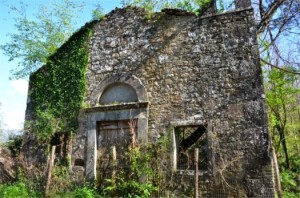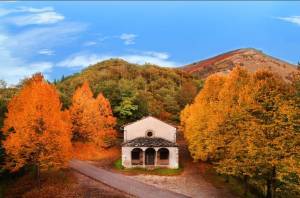BAGNI DI LUCCA’S PREVIOUS PANDEMIC.
Premise: I have translated and made a few additions to Bruno Micheletti’s fascinating recent article on Bagni di Lucca’s 1629-31 pandemic. Bruno Micheletti, as many of you will know is a leading member of our local historical association and some of you may have met him during Bagni di Lucca’s organised visit to Casabasciana. Bruno’s knowledge on these matters is, therefore, second to none.
***
Wear a face mask? No thanks. I prefer wearing a noose round my neck…
Every age has its own remedies and ways of facing and resolving emergency situations that arise. Obviously in the days when no-one knew how infections were transmitted, how they could be cured and, above all, when there were no vaccines, people turned to supernatural measures. Thus, during the great Italian plague of 1629-31 which claimed perhaps one million lives, or about 25% of the population, [the inhabitants of Bagni di Lucca, implemented the following measures. In September 1630 news of the plague pandemic arrived in the Lima valley. At that time, the entire territory of Lucca was still free from infection, so Bagni di Lucca’s local company of Suffrage (a charitable body dedicated to good works, and prayers for the dead) decided to make a pilgrimage to the sanctuary of Foce Colonia which is on the road that leads from the Monti di Villa to Montefegatesi and is better known today as the oratorio di Sant’Anna.
From there the procession decided to return via the Pieve di Controne and passed by another image considered miraculous: the Madonna Del Poggio at Guzzano.
(This is the church on the hill just outside Guzzano which suffered earthquake damage in 2012 but was well-restored thanks to the efforts of Claudio Gemignani. See my post on this church resurrection at https://longoio2.wordpress.com/2014/08/07/guzzano-church-resurrection/)
The same company also decided to undertake another penitential procession, this time from the church of San Martino (the as yet under restoration building just above the Terme Alte) to the Bagni Caldi down the hill to the church at Ponte al Serraglio. From here they proceeded to the church of San Marco. The brothers were all with their hoods pulled down over their faces and wearing a rope noose around their necks.
During the height of the plague (October 1630 – April 1631) every Saturday evening the Company of the Rosary would depart from Bagni di Lucca’s parish church of Corsena and head for the Madonna del Colle. They too wore a hood over their faces and a rope noose around their neck. The Commissioner of Val di Lima also participated in these processions, wearing his more elaborate noose. In addition guards were posted at the two bridges at Seraglio and at Palmaia, and a large gate installed across the road leading to the Controneria. Nobody was allowed to come in and nobody was allowed to leave…complete lock-down!
The plague fortunately ceased with the first summer heat of 1631. The town of Bagni di Lucca had only five deaths. The victims were all buried near the baths and not in the church. So the processions, the gates and the nooses worn around the neck had apparently worked successfully.
This valuable information by Bruno Micheletti prompted me to note that our own little church or Chiesina ‘della Margine’ at Longoio bears the date 1631 and is dedicated to the Madonna of the Seven Dolours.
This date cannot be coincidental. It is quite clear Longoio was saved from the pandemic by the prompt action of Bagni di Lucca’s company of suffrage. Having stated this I just wonder how long it will be for us inhabitants of the Controneria to be able to enter the town of Bagni di Lucca without fear of contagion or the necessity of wearing a face mask or of sanitizing one’s hands or practising social distancing. I, for one, almost feel that, subject to the arrival of the miracle vaccine, a suitably social distanced religious procession might even be in order. If it was successful in 1631 why not today?
I, at least would feel inclined that in order to give thanks to the Almighty for eventually delivering us from the pandemic we could have the former church of San Rocco outside nearby Vetteglia and now in a ruinous condition restored as a refreshment and information point for modern day pilgrims to the extraordinarily beautiful area of the Controneria.

(In case you didn’t know San Rocco was invoked against the plague and, judging by the number of churches dedicated to him, was particularly venerated. Born in a noble family the saint gave his wealth to the poor and became a mendicant pilgrim. During his travels the town of Acquapendente became badly affected by the Black Death; Saint Roch stopped there and healed its victims by making the sign of the cross over them. He cured the sick from several other plague-ridden towns without catching the disease himself. However, when the saint reached Piacenza in northern Italy he fell a victim and a fetid ulcer developed in his leg. So rank was its smell that people kept well away from him. Luckily a dog befriended Roch and brought him some food on a daily basis and even licked his ulcer clean. Hence St. Roch has also become the patron saint of dogs. So let’s have a refreshment point here for dog walkers and their pets too!)
The beautifully distanced photograph of the oratory of Foce Colonia (Madonna di Sant’Anna) is by courtesy of one of our finest local photographers, David Bonaventuri.















